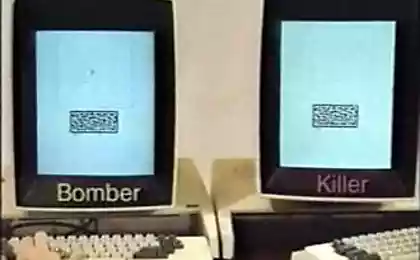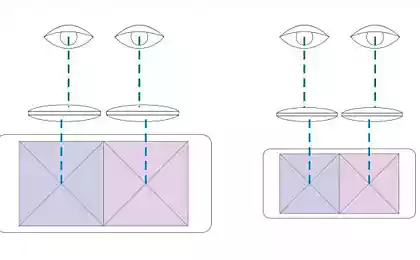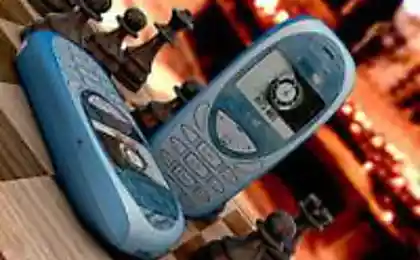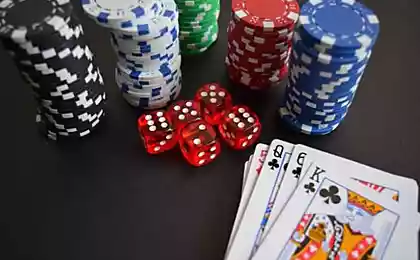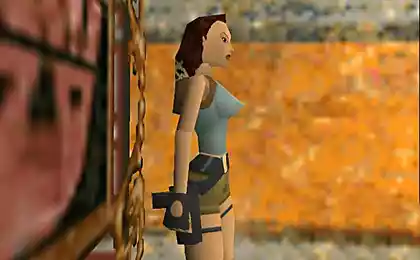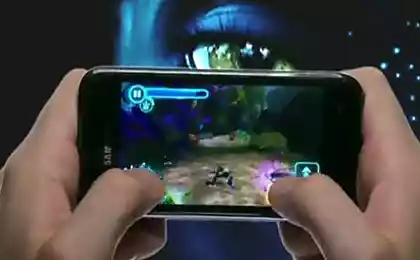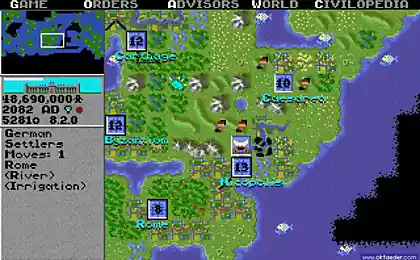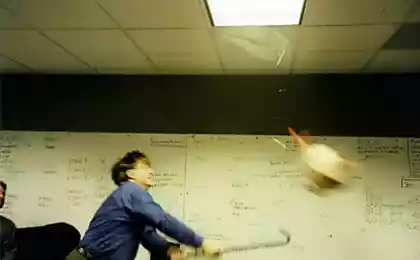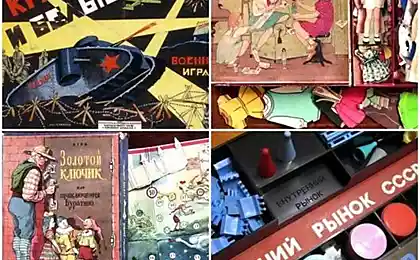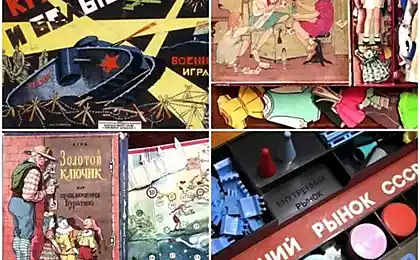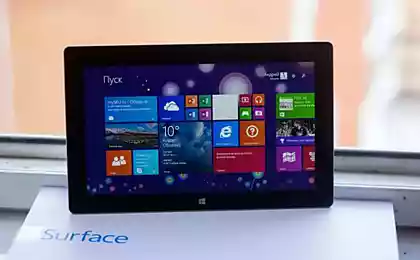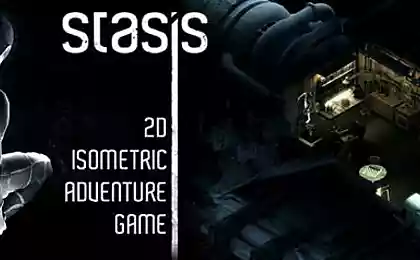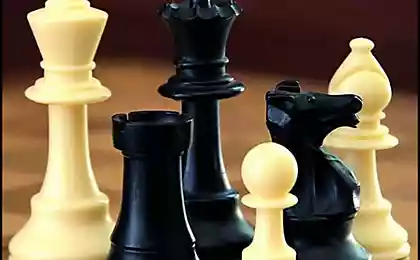673
On the mobile apps in the Soviet Union
Some time ago found in his shed old media with programs for Soviet mobile device. Having started avaricious man's tears on the good old days, I decided to tell the readers about my first steps in the field of IT.
TTX
The device, about which I wrote - a programmable calculator (PLA) 'Electronics MK-61'. This calculator uses RPN (hello, Forth!), So almost everyone who saw it for the first time, he asked: "Where there is equal." Also, the calculator 15 would register for storing data and 105 bytes of RAM.

So in my childhood toys were not even Kbyte.
After turning off the power RAM cleared and the next time you have to enter the program is turned on again. Later came the 'Electronics MK-52', which was not only non-volatile memory, and the ability to connect memory expansion units (PDUs) with additional programs.
PMK Store / Play
In the USSR, a few dozen books about PMC and programs for them were released. For example, my first book was a textbook-Calculator - your helper and the opponent in the games. She's appeared even earlier than the calculator. It was also released a few PDUs for the MC-52.
But perhaps the greatest contribution to the PMC and programming popularization made a number of Soviet zhurnalov.Odnim of the first to write about PMK magazine "Science and Life." Also, a number of articles published the "Quantum" magazine. With rare exceptions, generally considered applications. Games were quite a few. Crucially the situation has changed with the advent of the journal "Techniques of Youth" ( "TM") category "Club of electronic games." Over the years, heading it is not only a lot of different game programs have been published, but a lot of attention was paid to undocumented features PMC. Another magazine, pay attention to the game program was Ukrainian "Pioneer».
In 1988 came the gaming lovers Club (CLIP), a kind of social network (or rather BBS) by correspondence.
Club brought together 600 members from all over the USSR PMK. With a history of a clip can be found here and here.
Classification
games Despite the relatively limited resources for PLA are a large number of game programs have been developed. You can
identify several genres of games.
Simulations
There was a wide variety of simulators. As a rule of the game process was as follows. Player introduced new values of several parameters (the fuel consumption, the new speed, the angle of inclination, the time period during which these parameters act) and ran the calculations. After a while PMK showing the new position and the parameters of the simulated object (height or distance, the new rate, etc.). As in Soviet times was very popular space theme, then there was a series of simulation space flight simulators. The "TM" fantastic story "The Way of the Earth" was published, in which the heroes on the small lunolete depart from the Moon to the Earth. Each chapter describes some one trip stages. In addition to this chapter it was also accompanied by one or more programs with which readers can make sure that everything described - very true. Thus, the authors of the "TM" artwork created by programs for computers (or the book of the program), long before it became mainstream.
my flight map in the vicinity of the space station "Yuri Gagarin»
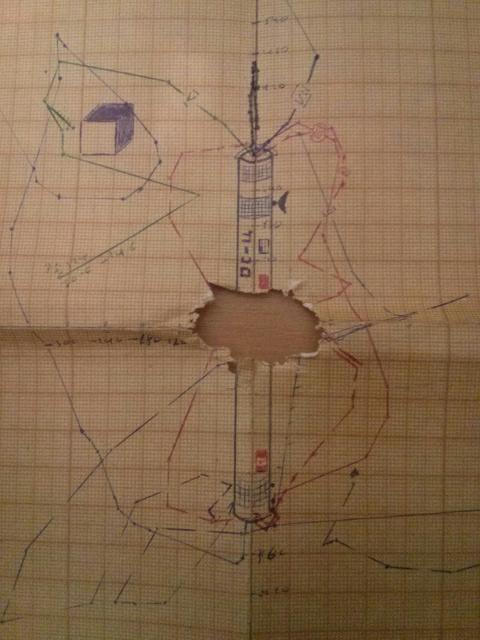
(Unfortunately, the station was a meteorite)
Strategy The first economic strategy, in which I played was the cheerful farmer simulator kolkhoz: it was necessary to plant a variety of agriculture and harvest. After the Soviet Union allowed the citizens to engage in self-employment (if it is so called), there was a simulation of cooperative café.
There were also military strategy. For example, it was possible to repeat the battle of Thermopylae and Battle of the Neva.
Desktop
It is obvious that teach PMK play checkers and chess even more impossible. However, to play some of the endings is quite real.
Photo of the chessboard, marked up for the game with MVP:

The most interesting for me was the game Wolf and Sheep. It quickly became clear that the usual 8x8 chessboard play is not interesting: four sheep always win, but three - lose. Therefore, it was developed version of the game on a 9x9 field. Though implement minimax algorithm could not be, the final program turned out pretty strong. This game impressed me so much that I later made a version for MS-DOS, a couple of years ago and for Android.
Dynamic
video Two features of PMC allow even realize dynamic video. Firstly, at the time of the calculation are displayed on the display any current values. Thus it was possible to demonstrate the dynamic "image." Secondly, in the first models of calculators it was funny hardware bug. PMK had a switch "RH" for the calculation of trigonometric functions in degrees and radians, respectively. It soon became clear that if you do not install the switch in the end positions and lock in the middle, it will perform calculations in grads (100 castles - is 90 degrees). Soon this turned into a bug You: from the switch came third state "GRD". If you calculate the value of the cos100 , you can determine the position of the switch: to obtain the value of degrees -0, 17 , ie a negative value for the castles - of course, 0 , for radian 0, 19 - a positive number. All games of this genre were based on the same principle: PLA for some time shown on the screen the current situation, giving the player the ability to make a decision. Then determines the position of the switch "P-RDT-G" and perform calculations. From the outside it looked pretty funny: The player stared at the flashing screen and fumbled frantically switch
Eggogologiya
. Like any self-respecting computer, PMC can display hex digits. But because of the limitations of the indicator they look a bit strange. For example, " A " designated as " - ", " B " - " L ". When an error occurs kalkulyatorvyvodil word " Error ", but it looks like " On Error ", which gave the name of the process of studying undocumented features PMC. Performing tricky operations on very large numbers (which could theoretically calculator not display) or referring to the great locations you can receive a variety of program memory writing.
For example, in the game "Lunolet-3" from the novel "The Way to the Earth" lunoleta position relative to the Earth and the Moon appear as follows:
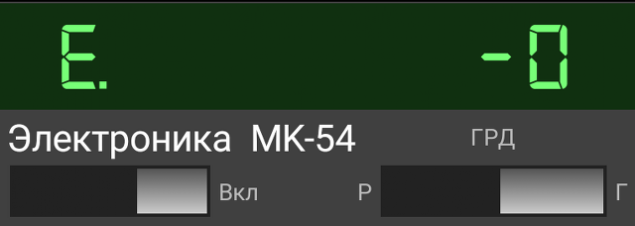
"< E " - the Earth, " O " - the Moon, " - " - lunolet
. Calculators MC-61/52 supported the operations of Boolean algebra. But they are typically used only for the formation of a number of posts: " 8CE " - the game is over, " 8-L8EC " - people lost. It has also been a few games that used to encode these operations labyrinths.
Over the history of PLA is described in detail here, but here is a great set of games.
Simulators and emulators
PMK There are several simulators of PMK, such as "3000 Calculators". There is also a real emulator [emu145] (https://code.google.com/archive/p/emu145/). Author emulator - Felix Lazarev - even bought a professional
microscope for photographing microcontrollers 145/745 series. In this forum, you can trace the development of the story.
Based emu145 Stanislav Borutsky created emulator for Android.
My Way
My calculator MK-61 appeared in 1989. It so happened that I did not know about the existence of the clip. The bulk of the program drew from the "TM" - or copied in the library (copiers did not yet exist), or borrowed from friends (usually then not give back). We had magazines "Science and Life" for several years. But it is mainly published applications that I have little interest. However, more than a game I liked to write programs. By the way I never knew the delights such as consoles Dendy - because they can not be programmed at home. My first toy was a space simulator, written under the influence of "Lunoletov". It was in the 6th grade, the lessons of physics we have learned by this time only the uniform motion. Therefore, to play it was not very interesting. In programming, I spent more time than the game itself. Then there was a series of programs. The most serious of my program was the realization Kalaha (mankaly). Despite the limited resources PMK, he won me quite often. I do not even know when I'm more happy when he won or lost when its program
. Several photos previously mentioned media:
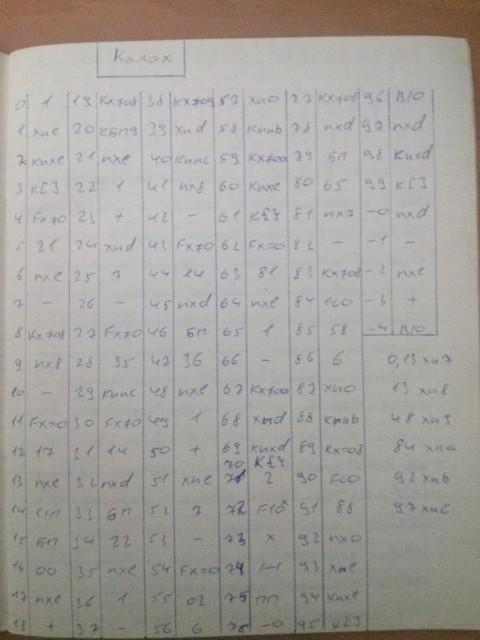
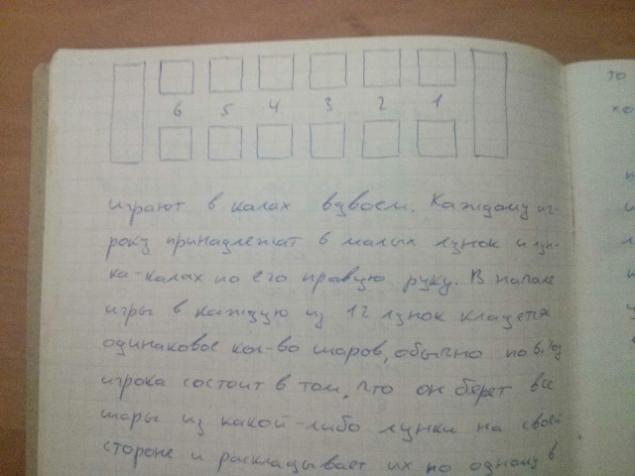
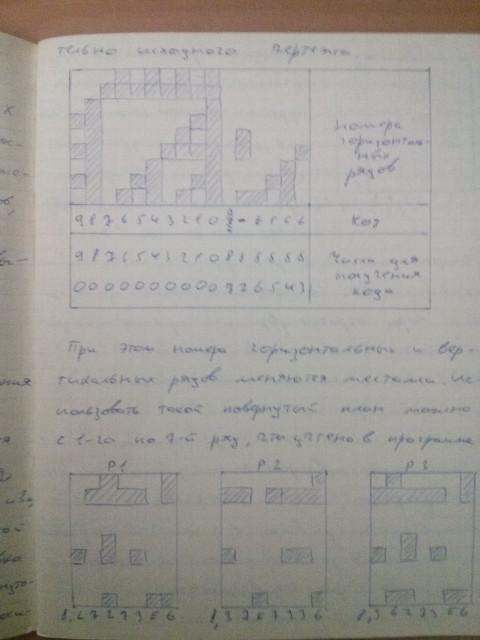
Not long ago, full circle and again I write programs for mobile devices.
Try
Habré has been some articles about programming the PMC: one, two, three
Of course, this zadrot man happy to spend half an hour driving a program code in order to then five minutes to play. For those that are weak in spirit, I have prepared a special version of the emulator with support for export / import programs (I posted this emulator on its behalf with the permission of Stanislav). I have also prepared several programs for this emulator. Just copy * pmk-file to your smartphone, and import it into the emulator.
Happy exploring!
P.S. the barn, where I found my notebook was a metal door marked "EU-1050».
UPD. Zenitchik reminded that there is a continuation of the series: MK-152/162
Source: geektimes.ru/post/277026/
TTX
The device, about which I wrote - a programmable calculator (PLA) 'Electronics MK-61'. This calculator uses RPN (hello, Forth!), So almost everyone who saw it for the first time, he asked: "Where there is equal." Also, the calculator 15 would register for storing data and 105 bytes of RAM.

So in my childhood toys were not even Kbyte.
After turning off the power RAM cleared and the next time you have to enter the program is turned on again. Later came the 'Electronics MK-52', which was not only non-volatile memory, and the ability to connect memory expansion units (PDUs) with additional programs.
PMK Store / Play
In the USSR, a few dozen books about PMC and programs for them were released. For example, my first book was a textbook-Calculator - your helper and the opponent in the games. She's appeared even earlier than the calculator. It was also released a few PDUs for the MC-52.
But perhaps the greatest contribution to the PMC and programming popularization made a number of Soviet zhurnalov.Odnim of the first to write about PMK magazine "Science and Life." Also, a number of articles published the "Quantum" magazine. With rare exceptions, generally considered applications. Games were quite a few. Crucially the situation has changed with the advent of the journal "Techniques of Youth" ( "TM") category "Club of electronic games." Over the years, heading it is not only a lot of different game programs have been published, but a lot of attention was paid to undocumented features PMC. Another magazine, pay attention to the game program was Ukrainian "Pioneer».
In 1988 came the gaming lovers Club (CLIP), a kind of social network (or rather BBS) by correspondence.
Club brought together 600 members from all over the USSR PMK. With a history of a clip can be found here and here.
Classification
games Despite the relatively limited resources for PLA are a large number of game programs have been developed. You can
identify several genres of games.
Simulations
There was a wide variety of simulators. As a rule of the game process was as follows. Player introduced new values of several parameters (the fuel consumption, the new speed, the angle of inclination, the time period during which these parameters act) and ran the calculations. After a while PMK showing the new position and the parameters of the simulated object (height or distance, the new rate, etc.). As in Soviet times was very popular space theme, then there was a series of simulation space flight simulators. The "TM" fantastic story "The Way of the Earth" was published, in which the heroes on the small lunolete depart from the Moon to the Earth. Each chapter describes some one trip stages. In addition to this chapter it was also accompanied by one or more programs with which readers can make sure that everything described - very true. Thus, the authors of the "TM" artwork created by programs for computers (or the book of the program), long before it became mainstream.
my flight map in the vicinity of the space station "Yuri Gagarin»

(Unfortunately, the station was a meteorite)
Strategy The first economic strategy, in which I played was the cheerful farmer simulator kolkhoz: it was necessary to plant a variety of agriculture and harvest. After the Soviet Union allowed the citizens to engage in self-employment (if it is so called), there was a simulation of cooperative café.
There were also military strategy. For example, it was possible to repeat the battle of Thermopylae and Battle of the Neva.
Desktop
It is obvious that teach PMK play checkers and chess even more impossible. However, to play some of the endings is quite real.
Photo of the chessboard, marked up for the game with MVP:

The most interesting for me was the game Wolf and Sheep. It quickly became clear that the usual 8x8 chessboard play is not interesting: four sheep always win, but three - lose. Therefore, it was developed version of the game on a 9x9 field. Though implement minimax algorithm could not be, the final program turned out pretty strong. This game impressed me so much that I later made a version for MS-DOS, a couple of years ago and for Android.
Dynamic
video Two features of PMC allow even realize dynamic video. Firstly, at the time of the calculation are displayed on the display any current values. Thus it was possible to demonstrate the dynamic "image." Secondly, in the first models of calculators it was funny hardware bug. PMK had a switch "RH" for the calculation of trigonometric functions in degrees and radians, respectively. It soon became clear that if you do not install the switch in the end positions and lock in the middle, it will perform calculations in grads (100 castles - is 90 degrees). Soon this turned into a bug You: from the switch came third state "GRD". If you calculate the value of the cos100 , you can determine the position of the switch: to obtain the value of degrees -0, 17 , ie a negative value for the castles - of course, 0 , for radian 0, 19 - a positive number. All games of this genre were based on the same principle: PLA for some time shown on the screen the current situation, giving the player the ability to make a decision. Then determines the position of the switch "P-RDT-G" and perform calculations. From the outside it looked pretty funny: The player stared at the flashing screen and fumbled frantically switch
Eggogologiya
. Like any self-respecting computer, PMC can display hex digits. But because of the limitations of the indicator they look a bit strange. For example, " A " designated as " - ", " B " - " L ". When an error occurs kalkulyatorvyvodil word " Error ", but it looks like " On Error ", which gave the name of the process of studying undocumented features PMC. Performing tricky operations on very large numbers (which could theoretically calculator not display) or referring to the great locations you can receive a variety of program memory writing.
For example, in the game "Lunolet-3" from the novel "The Way to the Earth" lunoleta position relative to the Earth and the Moon appear as follows:

"< E " - the Earth, " O " - the Moon, " - " - lunolet
. Calculators MC-61/52 supported the operations of Boolean algebra. But they are typically used only for the formation of a number of posts: " 8CE " - the game is over, " 8-L8EC " - people lost. It has also been a few games that used to encode these operations labyrinths.
Over the history of PLA is described in detail here, but here is a great set of games.
Simulators and emulators
PMK There are several simulators of PMK, such as "3000 Calculators". There is also a real emulator [emu145] (https://code.google.com/archive/p/emu145/). Author emulator - Felix Lazarev - even bought a professional
microscope for photographing microcontrollers 145/745 series. In this forum, you can trace the development of the story.
Based emu145 Stanislav Borutsky created emulator for Android.
My Way
My calculator MK-61 appeared in 1989. It so happened that I did not know about the existence of the clip. The bulk of the program drew from the "TM" - or copied in the library (copiers did not yet exist), or borrowed from friends (usually then not give back). We had magazines "Science and Life" for several years. But it is mainly published applications that I have little interest. However, more than a game I liked to write programs. By the way I never knew the delights such as consoles Dendy - because they can not be programmed at home. My first toy was a space simulator, written under the influence of "Lunoletov". It was in the 6th grade, the lessons of physics we have learned by this time only the uniform motion. Therefore, to play it was not very interesting. In programming, I spent more time than the game itself. Then there was a series of programs. The most serious of my program was the realization Kalaha (mankaly). Despite the limited resources PMK, he won me quite often. I do not even know when I'm more happy when he won or lost when its program
. Several photos previously mentioned media:



Not long ago, full circle and again I write programs for mobile devices.
Try
Habré has been some articles about programming the PMC: one, two, three
Of course, this zadrot man happy to spend half an hour driving a program code in order to then five minutes to play. For those that are weak in spirit, I have prepared a special version of the emulator with support for export / import programs (I posted this emulator on its behalf with the permission of Stanislav). I have also prepared several programs for this emulator. Just copy * pmk-file to your smartphone, and import it into the emulator.
Happy exploring!
P.S. the barn, where I found my notebook was a metal door marked "EU-1050».
UPD. Zenitchik reminded that there is a continuation of the series: MK-152/162
Source: geektimes.ru/post/277026/
A new elementary particle can solve the mystery of the missing lithium
Record sound through the phone vibration motor


